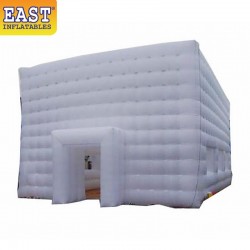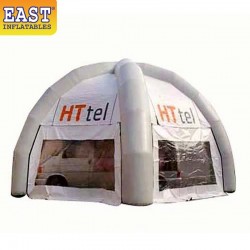
Inflatable tents, also known as air tents, work by utilizing inflatable tubes or beams to provide structural support instead of traditional tent poles. Here's a general overview of how inflatable tents work:

1 Inflatable Structure: The tent's frame consists of inflatable tubes or beams made from durable materials such as PVC or TPU (thermoplastic polyurethane). These tubes are designed to be lightweight, flexible, and strong enough to withstand the pressure of inflation.

2 Inflation: To set up the tent, you first locate the inflation points, usually located near the base of each tube or beam. These points are equipped with valves or air pumps. Depending on the model, you may manually inflate the tent using a hand pump or foot pump, or you may use an electric air pump for quicker inflation. Some tents even have built-in pumps that can be connected to a power source.

3 Structural Support: As the tent inflates, the tubes or beams expand and become rigid, providing the necessary structural support for the tent. The inflated tubes take the shape of poles and create a frame that holds the tent's fabric in place.

4 Stabilization: Once the tent is inflated, you may need to secure it to the ground using stakes or guy lines, just like traditional tents. This helps stabilize the tent and prevents it from being blown away by strong winds.
5 Tent Fabric: The tent fabric is typically made from durable materials such as polyester or nylon, which are attached to the inflatable frame. The fabric provides the actual shelter and protection from the elements.

6 Adjustment and Deflation: If adjustments need to be made to the tent's structure, you can release air from specific tubes or beams to alter its shape. When it's time to pack up, you open the valves or use the deflate function on the pump to release the air, allowing the tent to collapse and become compact for storage and transportation.
Inflatable tents offer several advantages, including quick setup and takedown times, lightweight design, and ease of transportation. They have become popular options for camping, outdoor events, and temporary shelters.



